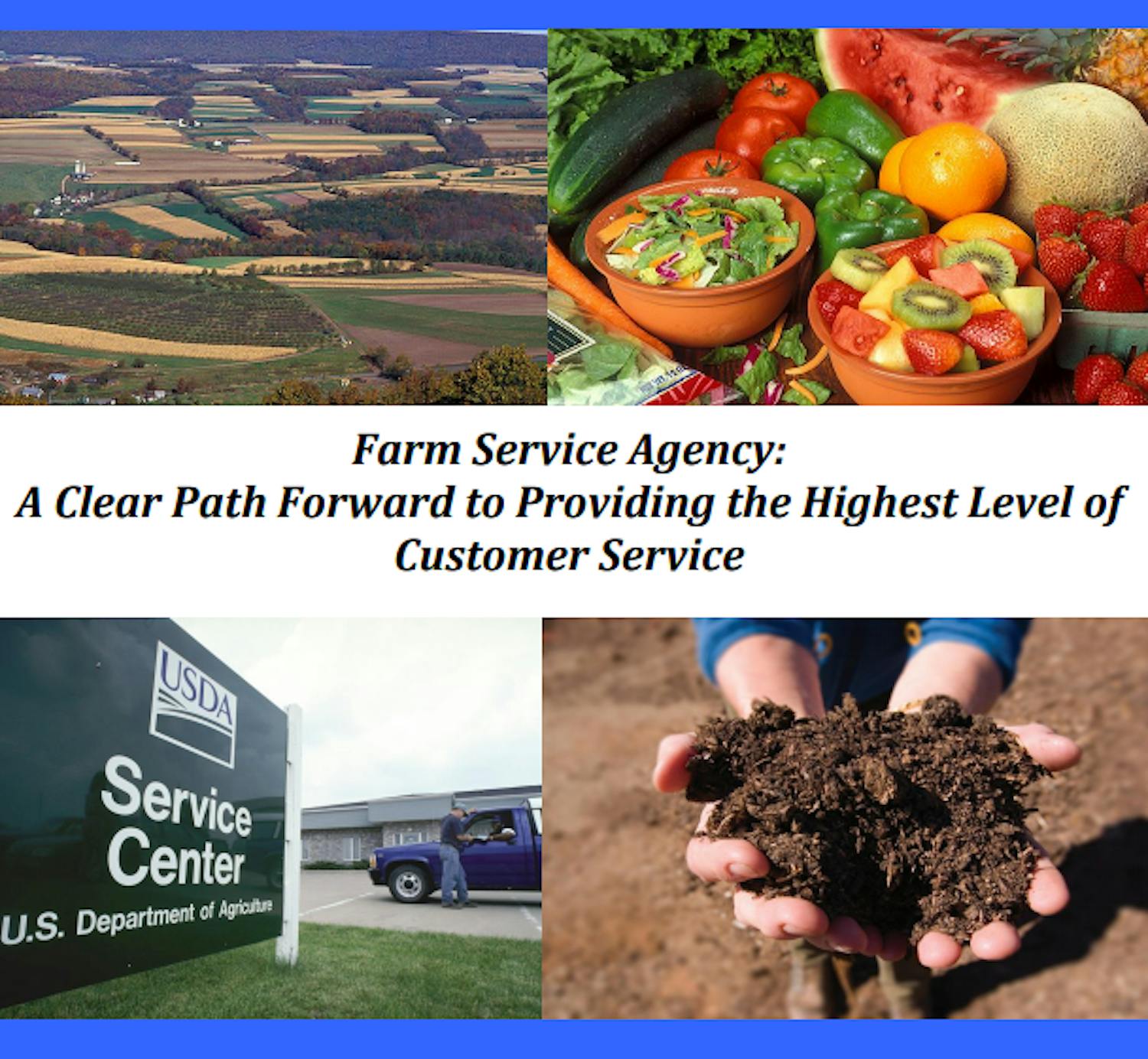
Farm Service Agency: A Clear Path Forward to Providing the Highest Level of Customer Service
By providing producers with income support and disaster assistance, helping to ensure producers have access to credit, and assisting producers with resource conservation practices, USDA’s Farm Services Agency (FSA) plays a vitally important role in supporting American agriculture.
The Academy formed a Panel of five Fellows supported by a professional study team to conduct this year-long study based on extensive independent research, including interviews with agency officials in both headquarters and the field; employee groups; external customer/stakeholder groups and oversight bodies; and in-person visits to FSA’s local service centers and state offices.
The Panel reviewed the challenges to FSA’s service delivery efforts, the constraints it faces in adjusting to these challenges, and the agency’s ongoing efforts improve customer service.
Click the button below to view the View Study Report.
View ReportKey Findings
Based on this assessment, which also included a review of effective practices in customer service, the Panel developed recommendations intended to inform Congress and FSA about options for moving forward with respect to five core objectives:
- Improve the efficiency and quality of in-person service delivery, while developing online/self-service delivery options.
- Adapt programs, delivery and outreach to meet the needs of historically underserved and new/beginning producers.
- Institutionalize an integrated agency-wide approach to customer service.
- Build workforce capacity and skills.
- Improve workload analysis/staffing model capabilities.
Recommendations
Farm Service Agency (FSA) enjoys a strong reputation for customer service. However, this reputation is based on an in-person service delivery model that faces a number of significant challenges, including budget constraints, increasing workload from program expansion, increasing demands to focus more intensively on outreach to historically underserved customer groups, new customer needs for assistance, staff retirements, and changes in technology and customer service delivery preferences. Also, in recent years, FSA has come under pressure to adapt its programs and delivery, as well as its outreach, to meet the particular needs of historically underserved and new and new/beginning farmers and ranchers.
The Panel’s approach seeks to balance these competing objectives. FSA must increase the efficiency of service delivery if it is to meet a growing workload. The Panel seeks ways by which FSA can increase efficiency, while maintaining the quality of service and ensuring continued and, in some cases, improved, access to services by all qualified producers. While it is leading practice to move toward more efficient, preferred service delivery channels over time, a public agency must not pursue efficiency at the expense of customer groups that may not have access to these channels. For example, online service delivery offers efficiency and customer convenience, but only for those with reliable, high speed internet access. In addition to increased efficiencies in service delivery, the Panel seeks ways that FSA might reduce its compliance workload to free up staff time for customer service without creating undue risk to program integrity.
One size does not fit all. FSA’s local service centers across the country deliver services to regions and localities that differ greatly in terms of customer mix, service needs and delivery preferences, diversity of agriculture, and travel distances. Accordingly, Panel recommendations seek to provide overall guidance, while preserving the flexibility to adapt to the diverse and changing circumstances of service delivery.
